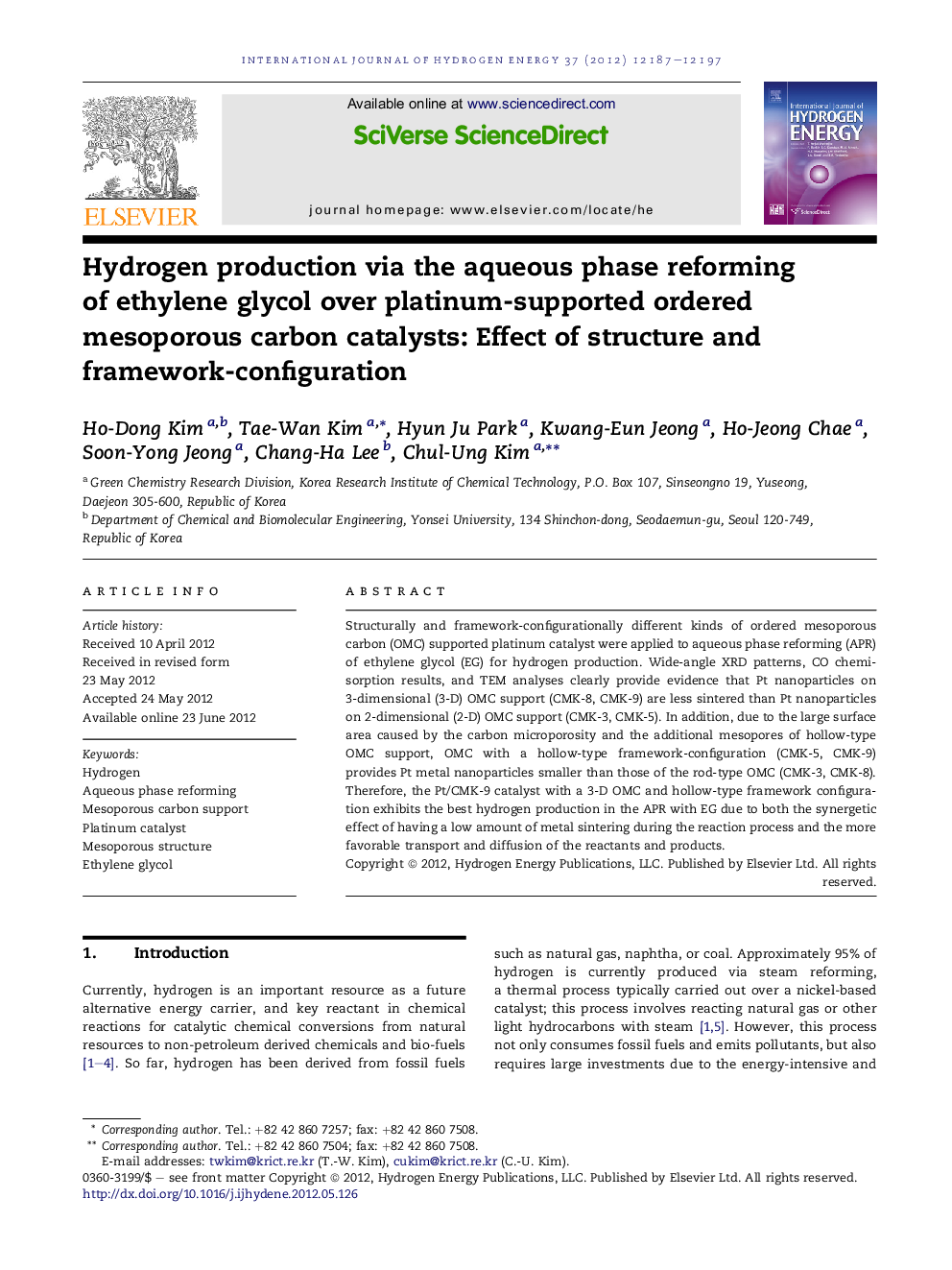| کد مقاله | کد نشریه | سال انتشار | مقاله انگلیسی | نسخه تمام متن |
|---|---|---|---|---|
| 1271053 | 1497552 | 2012 | 11 صفحه PDF | دانلود رایگان |

Structurally and framework-configurationally different kinds of ordered mesoporous carbon (OMC) supported platinum catalyst were applied to aqueous phase reforming (APR) of ethylene glycol (EG) for hydrogen production. Wide-angle XRD patterns, CO chemisorption results, and TEM analyses clearly provide evidence that Pt nanoparticles on 3-dimensional (3-D) OMC support (CMK-8, CMK-9) are less sintered than Pt nanoparticles on 2-dimensional (2-D) OMC support (CMK-3, CMK-5). In addition, due to the large surface area caused by the carbon microporosity and the additional mesopores of hollow-type OMC support, OMC with a hollow-type framework-configuration (CMK-5, CMK-9) provides Pt metal nanoparticles smaller than those of the rod-type OMC (CMK-3, CMK-8). Therefore, the Pt/CMK-9 catalyst with a 3-D OMC and hollow-type framework configuration exhibits the best hydrogen production in the APR with EG due to both the synergetic effect of having a low amount of metal sintering during the reaction process and the more favorable transport and diffusion of the reactants and products.
▶ The influence of structure of catalyst support was studied. ▶ Pt particles on 3-D OMC support are less sintered than those on 2-D OMC support. ▶ The support framework-configuration also affected the catalytic activity. ▶ Pt/CMK-9 catalyst showed higher hydrogen production and carbon conversion.
Journal: International Journal of Hydrogen Energy - Volume 37, Issue 17, September 2012, Pages 12187–12197